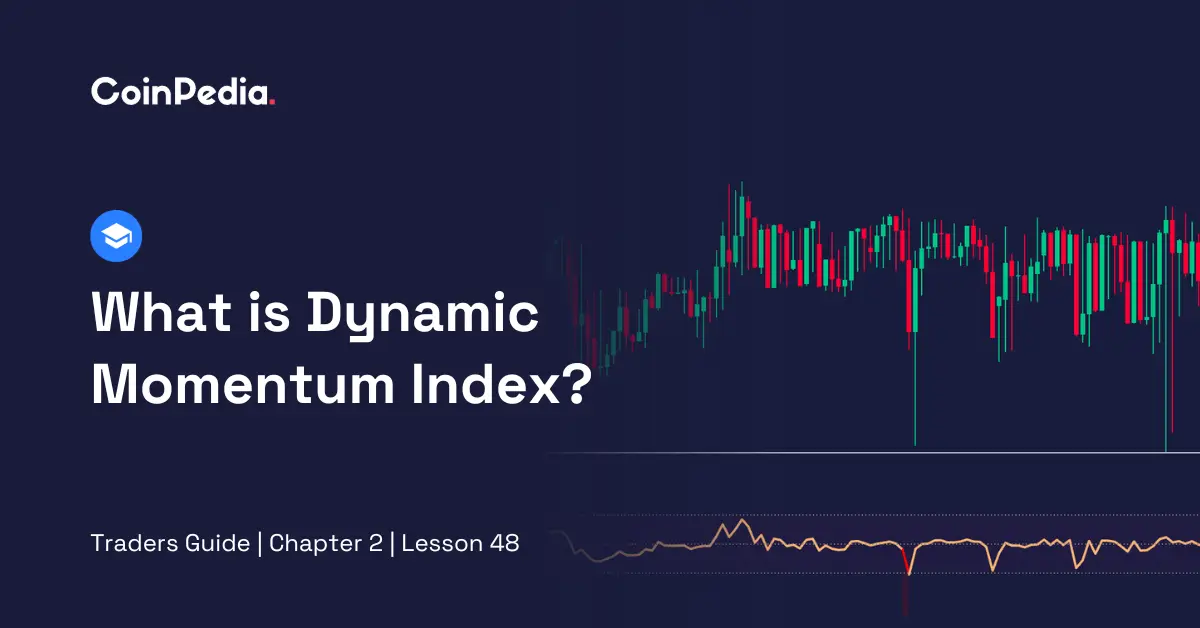
Have you ever wondered if there is a better alternative to RSI – an alternative that is less laggy in nature? The question is highly relevant when the volatile nature of the crypto market is taken into consideration. The best alternative to RSI is the Dynamic Momentum Index. Just like RSI, it is also an oscillator. Let’s explore this indicator to improve our trading capabilities. Are you ready?
1. Dynamic Momentum Index Defined
The Dynamic Momentum Index, much like the Relative Strength Index, is an advanced trading indicator that can help crypto traders understand if a cryptocurrency might be in a situation where it has been bought too much (overbought) or sold too much (oversold).
1.1. What’s Difference B/W RSI and DMI
Let’s break down the main difference between the Relative Strength Index and the Dynamic Momentum Index.
The key difference is in how they look at time periods. Check the below table:
| RSI | DMI |
| Uses a fixed number of time periods (usually 14) in its calculation This means it always considers the same amount of past data to assess the momentum of a cryptocurrency. | Adapts to changes in volatility by using different time periods, typically ranging between five and 30 DMI adjusts its calculation based on how volatile the market has been. If the market is erratic, it looks at a shorter time frame; if it is more stable, it considers a longer time frame. |
In simple terms, the DMI, unlike the RSI, is more flexible in approach, adjusting its analysis based on how wild or claim the price movements have been.
1.2. The History of Dynamic Momentum Index Explained
The Dynamic Momentum Index was initially proposed by Tushar Chande and Stanley Kroll. They introduced this indicator in the Stocks and Commodities Magazine in May 1993. Their idea was to create an indicator that could adapt to changing market conditions, considering the varying levels of volatility.
2. Calculating Dynamic Momentum Index: Easy Method Revealed
To explain how to calculate Dynamic Momentum Index is a bit difficult for its complex nature.
Let’s start with the formula:
| DMI = 100 * [ EMA (AD) / EMA (TP * Scaling Factor) |
Let’s explore each element of this formula one by one:
- Element 1: Typical Price (TP)
Add the highest price (High), lowest price (Low), and closing price (Close) for each period. Then, divide the sum by 3 to get the Typical Price.
- Element 2: Price Difference
Find the difference between the current TP and the TP n periods ago.
- Element 3: Absolute Difference (AD)
Take the absolute value of the price difference.
- Element 4: Exponential Moving Average (EMA of AD
Calculate the Exponential Moving Average of AD using a smoothing factor (SF).
- Element 5: Scaling Factor
Choose based on your preferences or the characteristics of the market you are analysing. If the market is highly volatile, you might choose a higher Scaling Factor. For less volatile markets, a low Scaling Factor could be suitable.
3. Steps to Launch Dynamic Momentum Index on a TradingView Chart
Launching the Dynamic Momentum Index indicator on a TradingView chart is a seven-step, simple process.
Here are the steps:
- Step 1
Go to the TradingView website and log in to your account.
- Step 2
Select the trading pair or asset you want to analyse.
- Step 3
Look for the ‘Indicators’ button on the TradingView interface and click on it.
- Step 4
In the search bar that appears, type ‘Dynamic Momentum Index’ and select it from the list of available indicators.
- Step 5
You can adjust parameters like time periods or scaling factors if needed.
- Step 6
Once applied, you will see the customised DMI line on your chart. Start analysis.
Also Read: Crypto Reversal Trading with Mass Index: An Easy Guide
4. How to Use Dynamic Momentum Index
As DMI is similar to RSI, the basic usage of the both is similar.
- Overbought/Oversold
Like RSI, DMI readings below 30 suggest oversold conditions, while levels above 70 indicate overbought conditions.
- Divergence
DMI divergence occurs when the price of an asset and the signals from the Dynamic Momentum Index move in opposite directions.
- Bullish
Occurs when the price is making lower lows, but the DMI is making higher lows.
- Bearish
Happens when the price is making higher highs, but the DMI is making lower highs.
Endnote
The Dynamic Momentum Index, born from the insights of Tusher Chande and Stanley Kroll, stands as a versatile indicator for crypto traders. Its adaptive nature distinguishes it from the Relative Strength Index (RSI), making it a valuable tool in gauging market sentiment. The article demystifies DMI’s complex calculations, provides a user-friendly guide for integration on TradingView, and unveils practical strategies for interpreting DMI signals. Whether identifying overbought/oversold conditions or spotting divergence, DMI equips trades to navigate the dynamic crypto landscape with exceptional confidence.
We'd Love to Hear Your Thoughts on This Article!
Was this writing helpful?
 Yes
Yes  No
No
Trust with CoinPedia:
CoinPedia has been delivering accurate and timely cryptocurrency and blockchain updates since 2017. All content is created by our expert panel of analysts and journalists, following strict Editorial Guidelines based on E-E-A-T (Experience, Expertise, Authoritativeness, Trustworthiness). Every article is fact-checked against reputable sources to ensure accuracy, transparency, and reliability. Our review policy guarantees unbiased evaluations when recommending exchanges, platforms, or tools. We strive to provide timely updates about everything crypto & blockchain, right from startups to industry majors.
Investment Disclaimer:
All opinions and insights shared represent the author's own views on current market conditions. Please do your own research before making investment decisions. Neither the writer nor the publication assumes responsibility for your financial choices.
Sponsored and Advertisements:
Sponsored content and affiliate links may appear on our site. Advertisements are marked clearly, and our editorial content remains entirely independent from our ad partners.



